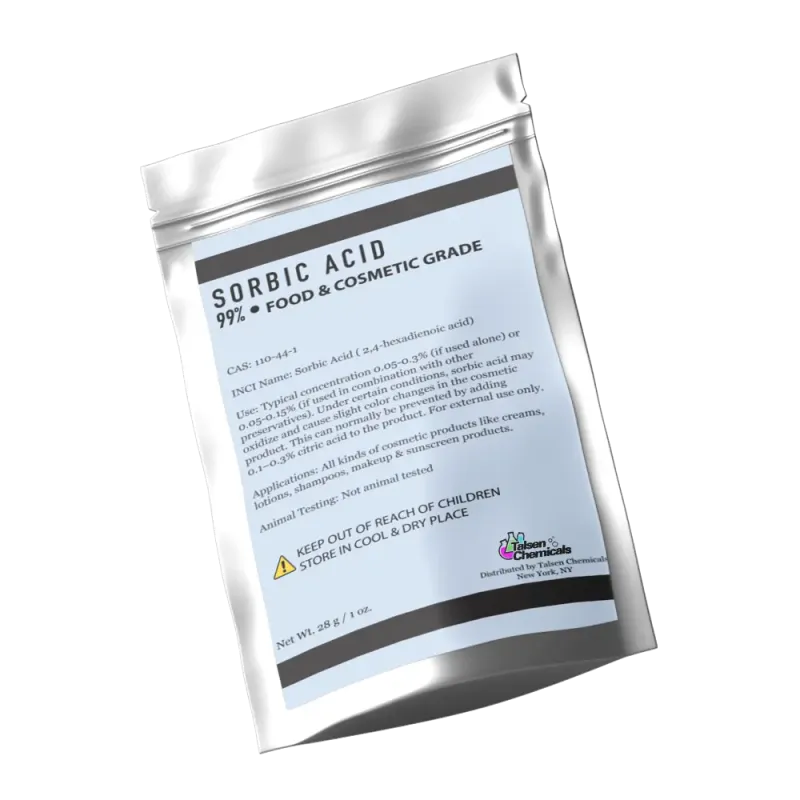
Image Source – Google
Sorbic acid is a widely used preservative in the food, cosmetic, and pharmaceutical industries. It is known for its effectiveness in inhibiting the growth of mold, yeast, and fungi, making it an essential ingredient in extending the shelf life of various products.
Understanding the science behind sorbic acid can help us appreciate its versatility and efficacy as a preservative solution. If you want to buy sorbic acid preservatives online then you may visit this website.
What is Sorbic Acid?
Sorbic acid, also known as 2,4-hexadienoic acid, is a naturally occurring organic compound. It is derived from the berries of the mountain ash tree (Sorbus aucuparia), hence the name "sorbic" acid. Sorbic acid is a white, crystalline powder with a slightly acidic taste. It is commonly used as a food preservative due to its antimicrobial properties.
Key Characteristics of Sorbic Acid:
- Chemical formula: C6H8O2
- Molecular weight: 112.13 g/mol
- Solubility: Soluble in ethanol and propylene glycol
- pH stability: Effective in acidic conditions (pH below 6)
Mechanism of Action
The effectiveness of sorbic acid as a preservative lies in its ability to disrupt the metabolic processes of microorganisms, thereby inhibiting their growth and proliferation. Sorbic acid primarily functions by lowering the pH of the environment, creating unfavorable conditions for microbial survival. Additionally, sorbic acid can penetrate the cell membrane of microorganisms and interfere with their enzymatic activities, leading to cell death.
Key Points on Sorbic Acid's Mechanism of Action:
- Disrupts microbial metabolic processes
- Lowers pH to inhibit microbial growth
- Interferes with enzymatic activities in microbial cells
Applications of Sorbic Acid
Due to its broad-spectrum antimicrobial properties and safe usage profile, sorbic acid finds applications in various industries. Some common uses of sorbic acid include:
Food Industry
- Preservation of baked goods, dairy products, and beverages
- Prevention of mold growth in cheeses and meats
- Extended shelf life for sauces, dressings, and condiments
Cosmetic Industry
- Inclusion in skincare products to prevent microbial contamination
- Preservation of creams, lotions, and makeup formulations
- Ensuring product stability and longevity
Pharmaceutical Industry
- Use in oral solutions, syrups, and topical formulations
- Prevention of microbial spoilage in pharmaceutical products
- Enhanced safety and efficacy of medications
Benefits of Sorbic Acid
As a versatile preservative solution, sorbic acid offers a range of benefits for manufacturers and consumers alike:
Key Advantages of Sorbic Acid:
- Efficient inhibition of mold, yeast, and fungi
- Extended shelf life of products
- Minimal impact on taste, color, and texture of items
- Safe for consumption and topical application
- Cost-effective preservation solution
Regulatory Considerations
It is essential for companies using sorbic acid as a preservative to comply with regulatory guidelines set by various authorities, such as the Food and Drug Administration (FDA) in the United States and the European Food Safety Authority (EFSA) in Europe. These regulations ensure the safe and proper use of sorbic acid in products consumed or used by the public.
Regulatory Requirements for Sorbic Acid Usage:
- Maximum allowable concentrations in different product categories
- Labeling requirements for products containing sorbic acid
- Good Manufacturing Practices (GMP) for production and storage
- Monitoring of microbial levels in preserved products
Conclusion
Sorbic acid serves as a versatile and effective preservative solution across various industries, thanks to its antimicrobial properties and safety profile. By understanding the science behind sorbic acid and its mechanism of action, manufacturers can utilize this compound to extend the shelf life of their products while ensuring consumer safety and satisfaction.